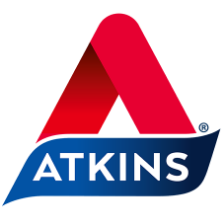- Home►Get inspired►Articles►keto diet
The Keto Diet – A guide to living a keto lifestyle


Scroll directly down to

This article will help you to understand how a ketogenic – or keto – diet works and why it may help to improve your health. We’ll also discuss the different keto foods, and snacks, which can make up a keto lifestyle.
Start on Atkins today and receive support, tips and meal plans for free!
What is ketosis?
Ketosis is a natural process that occurs in the body when your body starts to burn fat for fuel, in the absence of carbs. This means you’ll burn some of the dietary fat you eat as well as burning more bodyfat; allowing you to lose weight. Ketosis also has some other positives, such as reducing carb cravings, giving you more energy and stopping dips in energy – caused by highs & lows in blood sugar when you eat a high carb diet
What is a keto diet?
The Keto diet was originally formulated to treat epilepsy in children but has evolved over the decades and is now used by many people to improve health and help them to lose weight. The keto diet has similarities to some diets, such as Atkins.
How does the keto diet plan work?
By reducing carbohydrate intake to 20-50g per day, this switches the metabolic process in the body so you start to burn fat for fuel – rather than carbs which is what your body typically burns the most of. Protein intake is moderate on the keto diet as too much protein can be converted into glucose and therefore slow down the switch to burning fat.
How do I know I'm in ketosis?
Your body produces ketones and you can use ‘ketostix’ to measure your ketone level which will indicate whether you are in ketosis. These can be bought at most major pharmacies. There are other indicators though – you feel less hungry, you get a sudden increase in energy, you have a funny taste in your mouth (this can often be followed by bad breath but this is only temporary!).
What keto foods can you eat?
Foods that are higher in fat and lower in carbs are consumed on the keto diet. Here are some examples of higher fat, keto friendly foods:
- Fattier sources of meat such as lamb, beef or choose chicken legs/thighs rather than chicken breast
- Fattier fish such as salmon or mackerel
- Butter & cream
- Healthy oils such as groundnut, flaxseed or extra virgin olive oil
- Cheese
- Nuts & seeds
Start on Atkins today and receive more meal plans for free!
What are good as keto snacks?
- Olives
- Nuts
- Seeds
- Eggs, for instance; hard-boiled
- Leftover meat or chicken
- Guacamole
- Beef jerky
Are vegetables keto-friendly? What keto vegetables can you eat?
Vegetable intake is encouraged on the keto diet but stick to low carb vegetables such as salad vegetables (lettuce, cucumber, tomato etc) or cauliflower, Brussels sprouts, broccoli or leafy green vegetables. Avoid high carb vegetables such as potatoes, carrots, peas and sweetcorn.
Are there any other health benefits of the keto diet?
As well as allowing you to lose weight relatively quickly, yet in a safe & effective way; you may also experience more mental clarity, increased energy levels, less bloating and food cravings disappear.
In terms of long-term health, the keto diet has been linked to reductions in high blood pressure, high triglyceride levels, and high cholesterol and may even lead to a reduced risk of stroke, heart disease and other cardiovascular diseases.
Start your Atkins journey today!
Start on Atkins today
Do you want to lose weight or maintain your weight? Atkins is there to help you!
Sign me up for Atkins
